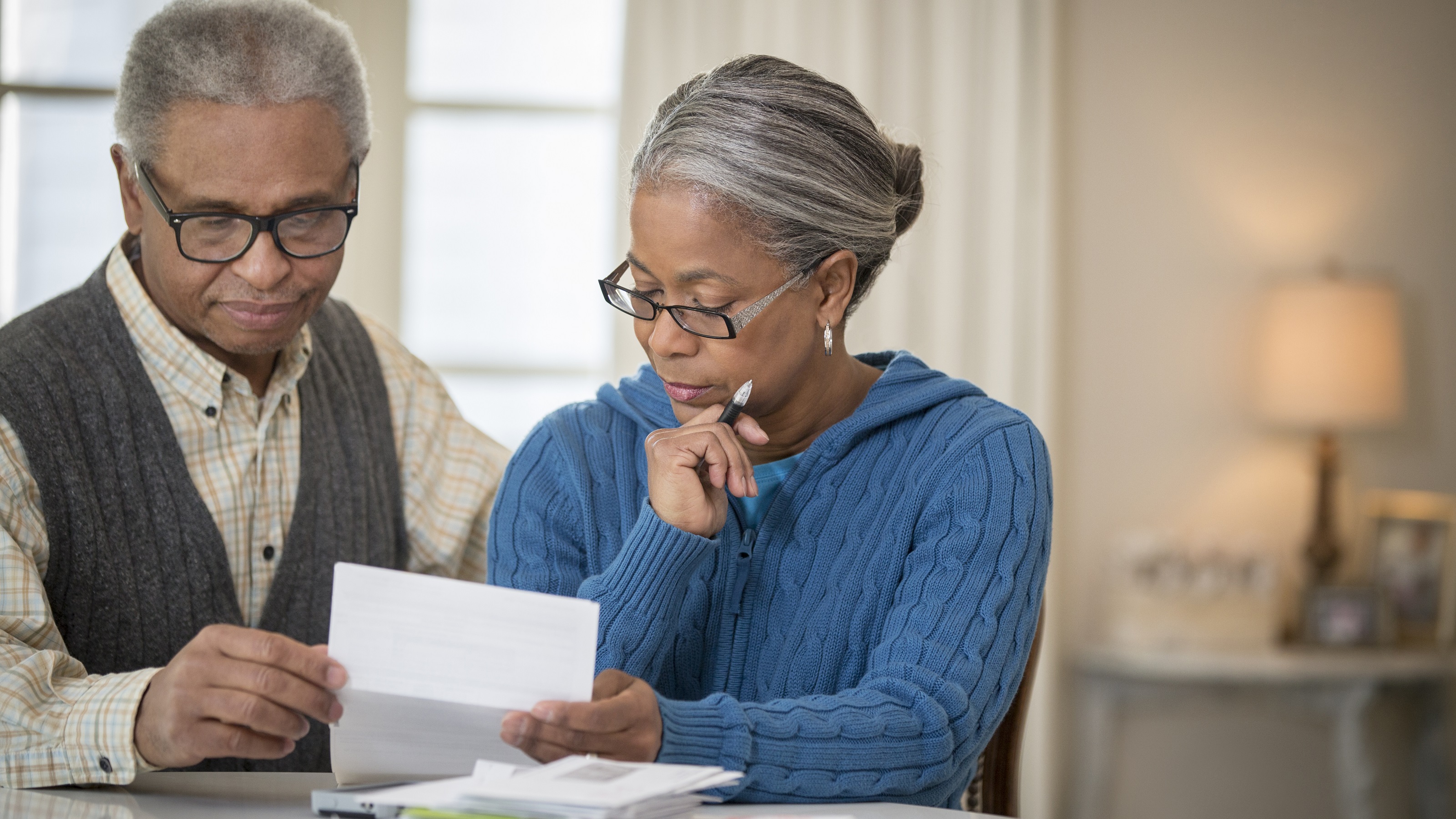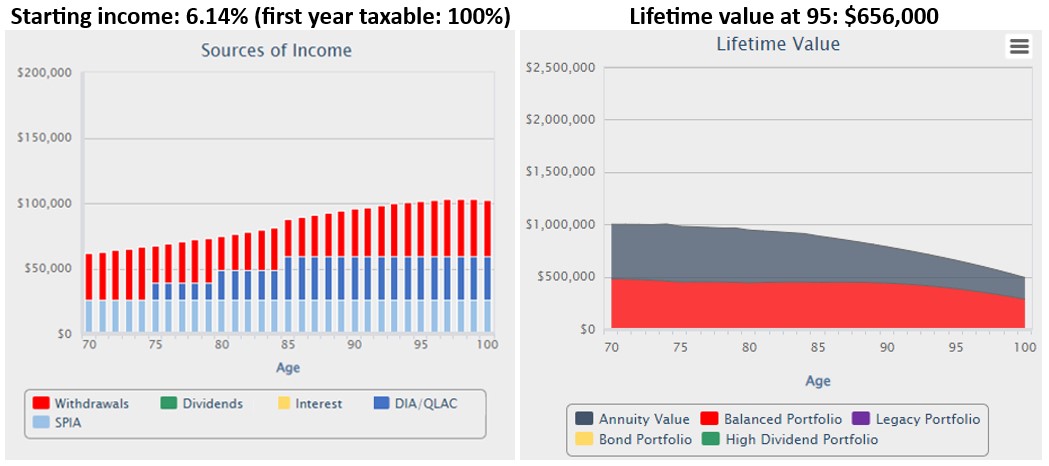Remember: Retirement Accounts Are Not All Taxed the Same
How you handle your pre-tax and after-tax accounts can make a big difference in your income in retirement and the legacy you leave.


As you formulate your plan for retirement, you may be pleased with the amount of money saved over your working life and now invested in your after-tax investment accounts, IRA/401(k) accounts and as equity in your house.
Yes, you can convert your savings to income in a variety of ways, but how you plan and allocate income among investments and annuities — and between accounts — can enhance your ability to take vacations, make gifts, provide health care and generally support your lifestyle for the rest of your retired life.
I’ve said before that while planning for retirement income is not rocket science, there are literally trillions of potential plans you could design with your adviser. Naturally, we want to make it easy for you to choose one — without a degree in investment management or actuarial science. However, there’s one area we can’t oversimplify: Do not treat all your savings alike in creating your plan.
From just $107.88 $24.99 for Kiplinger Personal Finance
Become a smarter, better informed investor. Subscribe from just $107.88 $24.99, plus get up to 4 Special Issues

Sign up for Kiplinger’s Free Newsletters
Profit and prosper with the best of expert advice on investing, taxes, retirement, personal finance and more - straight to your e-mail.
Profit and prosper with the best of expert advice - straight to your e-mail.
Treating all savings the same invariably leads to rule-of-thumb shortcuts, riskier deaccumulation strategies and betting solely on market performance to deliver on your spendable income needs and legacy objectives.
Two main sources of retirement savings
In this article, we will look separately at most investors’ two largest savings sources — the “qualified” savings in pre-tax accounts and the personal savings on which you have paid taxes — to see how you might use them to deliver income and a legacy most efficiently. We’ll bring them together again at the end to show how to take advantage of every tax benefit you can get.
But as background, here’s how our typical female, 70-year-old investor with $2 million in savings split equally between qualified and after-tax savings, will fare with her Go2Income plan prepared in late August. The plan delivers 5.94% (nearly $119,000) in starting income, growing by 2% a year, and a lifetime value (of investment portfolio and annuities) of about $2 million at age 95. About 40% of her income was taxable in the first year.
IRA2Income: Plan with qualified savings only
Splitting our investor’s plan into two gives us some insights into how each element contributes to overall success. Set out below is the plan for our investor that deploys only her $1 million of qualified savings.

Highlights of IRA2Income: Our investor is generating a higher percentage of first-year cash flow (6.14%). than other planning methods and sees it growing by 2% a year until age 85. On the other hand, her lifetime value will decline over time because of the requirement to withdraw required minimum distributions, or RMDs, from her account. The only constant in this plan will be the taxes on both income and her legacy. It’s a basic law of U.S. taxation: If you don’t pay taxes upfront, you’ll pay at the back end.
Summary of tax treatment of qualified account: One benefit of accumulating savings in an IRA or 401(k) is, of course, the tax deferral until you must start to take RMDs. For most of us, that is at age 73 under the new RMD rules. Here are some other insights:
- Tax deferral in qualified accounts enables you to rebalance your portfolios and avoid tax on capital gains within the account.
- Use up to $200,000 of your qualified savings to purchase a deferred income annuity called a QLAC, enabling you to delay the payments until as late as age 85.
- QLAC can supply income starting when expenses for medical support and home health care can be expected to skyrocket.
- One negative is that using rollover IRA savings to purchase an immediate income annuity means you’re paying current taxes without any benefit of deferral.
Savings2Income: Plan with personal savings only
Here’s the plan if our retiree invested $1 million in after-tax savings:

Highlights of plan. As you can see, our investor’s starting income at 5.08% will be less than a plan with everything invested in qualified accounts. However, only 24% of first-year income is taxed, and her lifetime value will grow dramatically, instead of shrink.
Description of tax structure. In this account, our investor is generating a reasonable amount of income, particularly on an after-tax basis, as well as a growing legacy.
- Her personal savings, which have already been taxed, can purchase products like stocks that produce dividends and interest, as well as immediate income annuities.
- A large portion of annuity payments are excluded from tax when purchased with personal savings, driving down your overall tax rate.
- When our investor leaves personal savings to heirs, her beneficiaries will enjoy a step-up in basis at her passing and pay no tax on the gain.
Go2Income: Combining IRA2Income and Savings2Income plans
Assembling IRA2Income and Savings2Income into a single Go2Income plan involves adjustments made either by us or your adviser, particularly to take advantage of the tax breaks of each account. As suggested above, the tax savings you earn on income from personal savings or qualified plans individually can be significant. But the IRS doesn’t tax based on separate earning streams. You are taxed on all your income, and the benefits of each type of savings interrelates with the other. Stock dividends, for example, are taxed at a lower rate than other sources; your total taxes will depend on the entirety of your taxable income.
So, looking at the plan on a combined or holistic basis, there are certain things you might do if you’re not working with an adviser and instead developing a plan on your own:
- Purchase any immediate income annuities from your personal savings and as a result have a significant portion of income in early years excluded from tax.
- Allocate your growth equity portfolios to your rollover IRA and high-dividend equities to personal savings.
- Use a rollover IRA for rebalancing your investment portfolios to avoid taxes on sale of investments.
- Use personal savings for long-term compounding of investment returns to maximize the step-up in basis at your passing.
- Purchase longevity insurance in the form of deferred income annuities (QLAC) in your qualified account.
Bottom line, whether you’re planning by individual account or for all accounts, consider product selection and allocation.
Your next steps
It’s not rocket science. However, it can get complicated. At Go2Income, we can create plans that show the benefits of only qualified savings, or only personal savings, or everything together. Whatever you are ready for, we can help you find the most income and the lowest taxes.
related content
- Can AI Plan Your Retirement Better Than I Can?
- Can Your Retirement Income Plan Cover Unplanned Expenses?
- Four Tips to Help You Conquer the Retirement Mountain
- Are You Worried About Running Out of Money in Retirement?
- How, Like Indy, to Outrun the (Retirement) Boulder
Profit and prosper with the best of Kiplinger's advice on investing, taxes, retirement, personal finance and much more. Delivered daily. Enter your email in the box and click Sign Me Up.

Jerry Golden is the founder and CEO of Golden Retirement Advisors Inc. He specializes in helping consumers create retirement plans that provide income that cannot be outlived. Find out more at Go2income.com, where consumers can explore all types of income annuity options, anonymously and at no cost.
-
 How Much a $100k Jumbo CD Earns You
How Much a $100k Jumbo CD Earns YouYou might be surprised at how fast a jumbo CD helps you reach your goals.
-
 How Charitable Trusts Benefit You and Your Favorite Charities
How Charitable Trusts Benefit You and Your Favorite CharitiesThese dual-purpose tools let affluent families combine philanthropic goals with advanced tax planning to generate income, reduce estate taxes and preserve wealth.
-
 A 5-Step Plan for Parents of Children With Special Needs
A 5-Step Plan for Parents of Children With Special NeedsGuidance to help ensure your child's needs are supported now and in the future – while protecting your own financial well-being.
-
 A Financial Planner Takes a Deep Dive Into How Charitable Trusts Benefit You and Your Favorite Charities
A Financial Planner Takes a Deep Dive Into How Charitable Trusts Benefit You and Your Favorite CharitiesThese dual-purpose tools let affluent families combine philanthropic goals with advanced tax planning to generate income, reduce estate taxes and preserve wealth.
-
 A 5-Step Plan for Parents of Children With Special Needs, From a Financial Planner
A 5-Step Plan for Parents of Children With Special Needs, From a Financial PlannerGuidance to help ensure your child's needs are supported now and in the future – while protecting your own financial well-being.
-
 A Wealth Adviser Explains: 4 Times I'd Give the Green Light for a Roth Conversion (and 4 Times I'd Say It's a No-Go)
A Wealth Adviser Explains: 4 Times I'd Give the Green Light for a Roth Conversion (and 4 Times I'd Say It's a No-Go)Roth conversions should never be done on a whim — they're a product of careful timing and long-term tax considerations. So how can you tell whether to go ahead?
-
 A 4-Step Anxiety-Reducing Retirement Road Map, From a Financial Adviser
A 4-Step Anxiety-Reducing Retirement Road Map, From a Financial AdviserThis helpful process covers everything from assessing your current finances and risks to implementing and managing your personalized retirement income plan.
-
 The $183,000 RMD Shock: Why Roth Conversions in Your 70s Can Be Risky
The $183,000 RMD Shock: Why Roth Conversions in Your 70s Can Be RiskyConverting retirement funds to a Roth is a smart strategy for many, but the older you are, the less time you have to recover the tax bite from the conversion.
-
 A Financial Pro Breaks Retirement Planning Into 5 Manageable Pieces
A Financial Pro Breaks Retirement Planning Into 5 Manageable PiecesThis retirement plan focuses on five key areas — income generation, tax management, asset withdrawals, planning for big expenses and health care, and legacy.
-
 4 Financial To-Dos to Finish 2025 Strong and Start 2026 on Solid Ground
4 Financial To-Dos to Finish 2025 Strong and Start 2026 on Solid GroundDon't overlook these important year-end check-ins. Missed opportunities and avoidable mistakes could end up costing you if you're not paying attention.
-
 Are You Putting Yourself Last? The Cost Could Be Your Retirement Security
Are You Putting Yourself Last? The Cost Could Be Your Retirement SecurityIf you're part of the sandwich generation, it's critical that you don't let the needs of your aging parents come at the expense of your future.